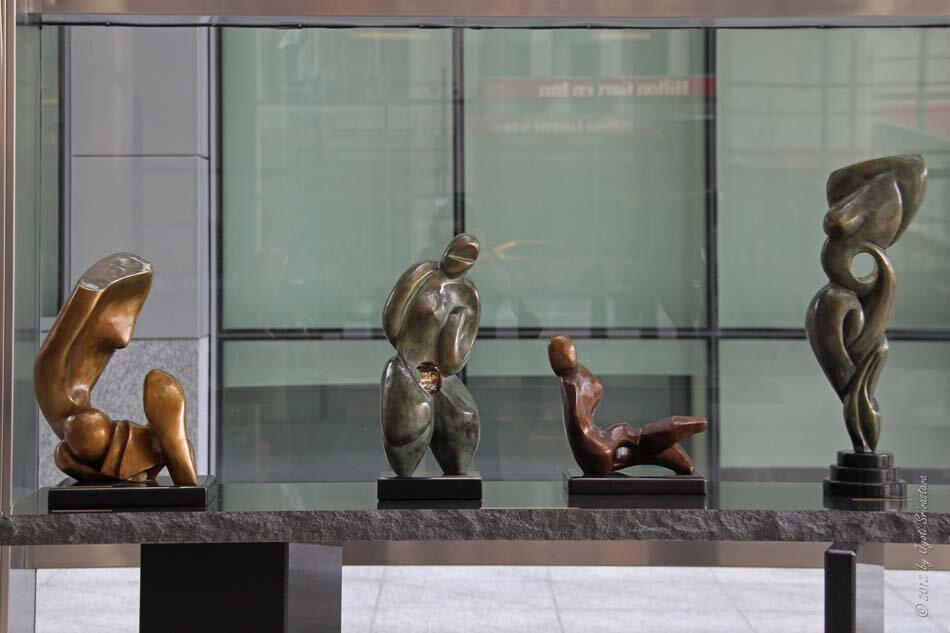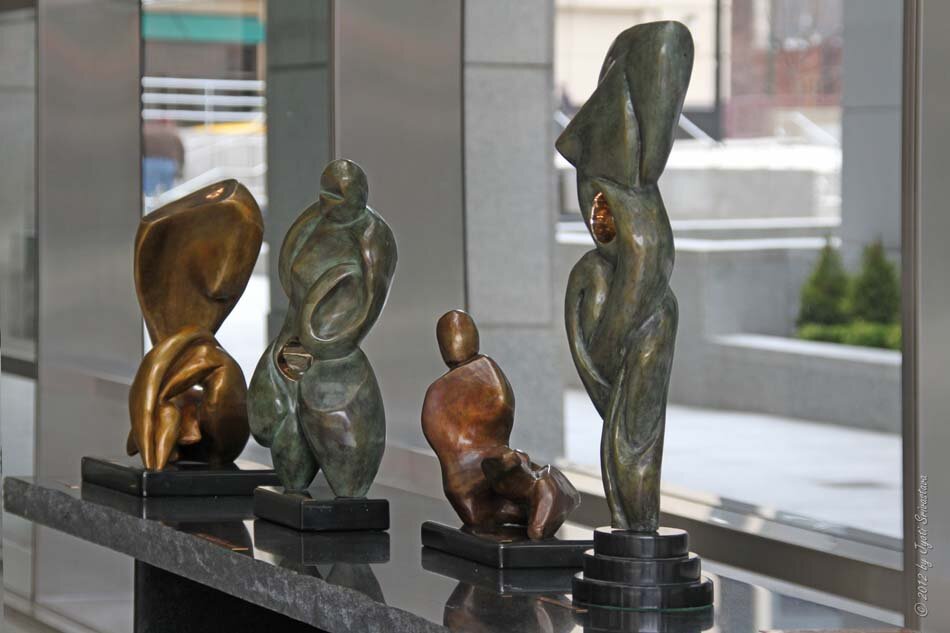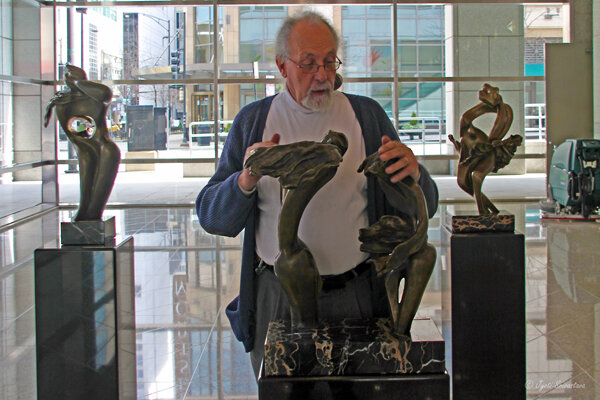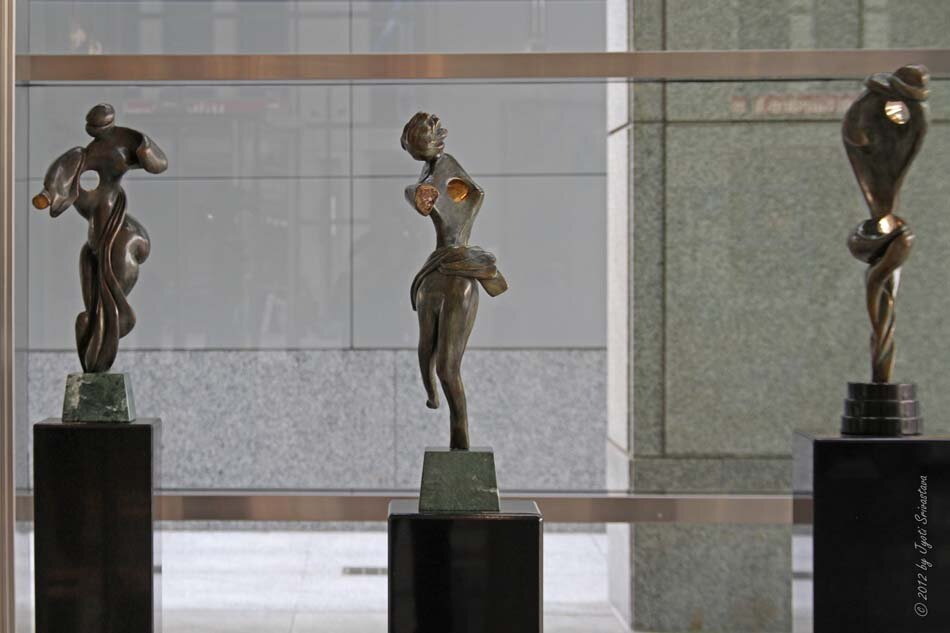The Studio
The Lost Wax Casting Process
1.) The originals, before the bronze sculptures, are first created in clay.
2.) From these originals, or positive clay sculptures, multi-section negative molds are made. To obtain this rubber negative, the positive clay casts are shellacked, greased, and covered with clay approximately ½ thick, and the clay in turn is covered with plaster shells. After these outer plaster shells have dried, the shells, which are divided into two or more parts, are opened, the clay inside is removed, and the shells are cleaned and greased. The positives are then enclosed within the two parts of their shells, and rubber is poured between the outer plaster shells and the positives. Negative rubber molds are thus obtained.
3.) The rubber negatives are now ready to have layers of red wax brushed on it. Then, two sections are carefully placed together and wax is poured inside and hardened.
4.) After the wax has hardened, the rubber negatives are removed, leaving wax copies of the bronze sculptures. The wax is retouched with heated metal sculptural tools to correct imperfections.
5.) Wax tubes called gates and vents are attached to the outside of the wax sculpture. These are necessary for the flow of the molten bronze into the cavity and exit of the air trapped in the mold during the pouring process for bronze sculptures.
6.) The wax copies with the gates and vents attached are encased in a mixture of ceramic sand with the ends of the gates and vents exposed. The pieces in the encasements are placed in an oven. The entire mass is baked slowly to rid its ceramic of moisture and to melt the wax inside. During heating, which takes two days or longer, the wax runs out of the gates and vents.
7.) The ceramic shells are braced in a sand pit, and molten bronze is poured inside through the gates. The molten bronze fills the space left where the wax melted or was lost. When the bronze has cooled, the ceramic is removed from the bronze.
8.) The bronze gates and vents are cut off, and the bronze sculptures are retouched where the gates and vents were connected to it.
9.) The bronze sculptures are cleaned in acid, chased, ground and sanded. Finally, various acids are applied to produce different colors desired. The acid is brushed on, and heat is applied with a torch until the appropriate shading of color is reached.



